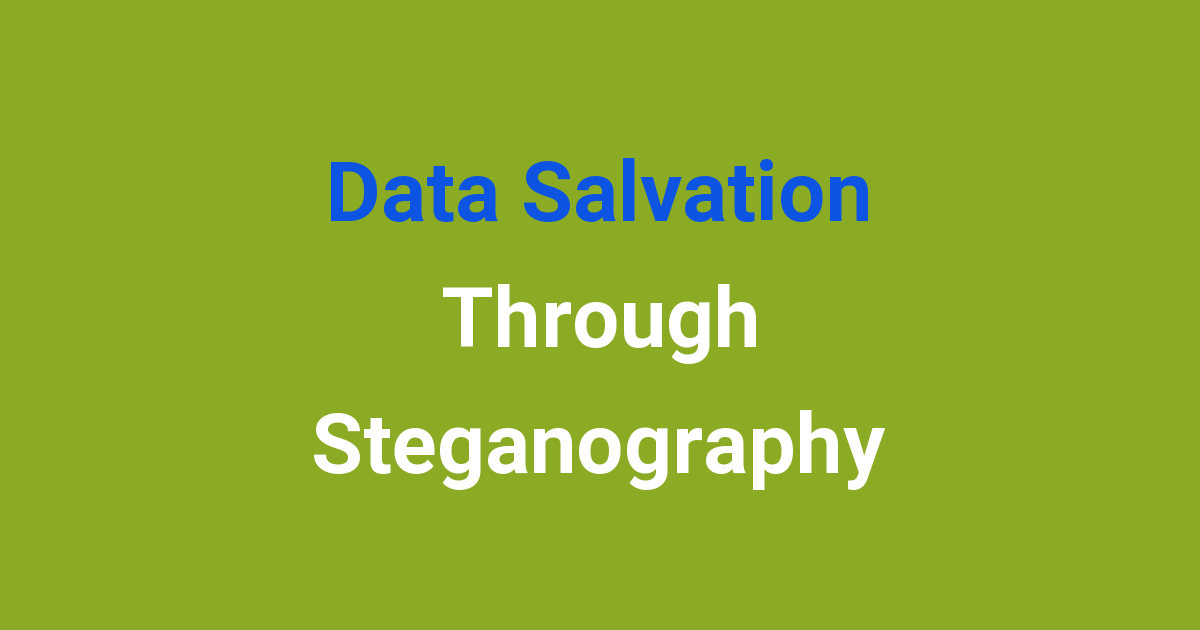Salvation achieved through the art of steganography.
Introduction
Steganography is the art of hiding messages or data within non-secret text or data. It is used to conceal the existence of the message or data. In today’s digital age, data security has become a major concern. With the increase in cyber-attacks and data breaches, it has become essential to protect sensitive information from unauthorized access.
One of the ways to achieve data security is through steganography. Data salvation through steganography is a technique used to securely transfer data without the risk of interception or detection. By hiding the data within seemingly innocuous files, such as images or audio files, individuals can protect their sensitive information from prying eyes.
In this project work, we will explore the concept of data salvation through steganography and propose a new system to enhance data security.
Problem Statement
The traditional methods of data transfer, such as encryption and password protection, are not foolproof. Hackers can still intercept and decrypt the data if they have the right tools and knowledge. This poses a significant risk to individuals and organizations who need to transfer sensitive information securely.
Steganography offers a more secure way to transfer data. However, the existing systems have certain limitations that need to be addressed. The current systems may not provide enough security measures or may be prone to detection by sophisticated tools.
Existing System
The existing systems for data salvation through steganography typically involve hiding data within images or audio files. This is done by manipulating the least significant bits of the files to embed the secret data. While this method can be effective in concealing the data, it may not provide complete security.
Some of the disadvantages of the existing systems include:
– Limited capacity for hiding data
– Susceptibility to detection by advanced steganalysis tools
– Lack of robust encryption techniques
Disadvantages
The current systems for data salvation through steganography have several disadvantages that need to be addressed. Some of the key drawbacks include:
– Limited data hiding capacity: The existing systems may have a limited capacity for hiding data, which restricts the amount of information that can be securely transferred.
– Susceptibility to detection: With the advancements in steganalysis tools, the existing systems may be easily detectable by sophisticated algorithms.
– Lack of robust encryption: The encryption techniques used in the existing systems may not provide enough protection against attacks.
Proposed System
To address the limitations of the existing systems, we propose a new system for data salvation through steganography. The proposed system will incorporate the following features to enhance data security:
– Increased data hiding capacity: The new system will have a higher capacity for hiding data, allowing users to transfer larger amounts of information securely.
– Advanced encryption techniques: The proposed system will incorporate robust encryption techniques to protect the data from unauthorized access.
– Steganalysis resistance: The new system will be designed to resist detection by advanced steganalysis tools, ensuring the security of the hidden data.
Advantages
The proposed system for data salvation through steganography offers several advantages over the existing systems. Some of the key benefits include:
– Enhanced data security: The new system provides a higher level of security for transferring sensitive information, reducing the risk of unauthorized access.
– Increased data hiding capacity: Users can transfer larger amounts of data securely, enhancing the usability of the system.
– Improved resistance to detection: The new system is designed to resist detection by sophisticated steganalysis tools, ensuring the secrecy of the hidden data.
Features
The proposed system for data salvation through steganography will include the following features:
– User-friendly interface: The system will have an intuitive interface that makes it easy for users to hide and retrieve data.
– Enhanced data hiding capacity: Users will be able to hide larger amounts of data within files, increasing the system’s usability.
– Robust encryption techniques: The system will incorporate advanced encryption techniques to protect the hidden data from unauthorized access.
– Steganalysis resistance: The system will be designed to resist detection by steganalysis tools, ensuring the security of the hidden data.
Conclusion
In conclusion, data salvation through steganography offers a secure way to transfer sensitive information. The existing systems may have limitations that need to be addressed to enhance data security. By proposing a new system with increased data hiding capacity, advanced encryption techniques, and resistance to detection, we can improve the security of data transfer. The proposed system will provide users with a more secure and reliable method for protecting their sensitive information.

